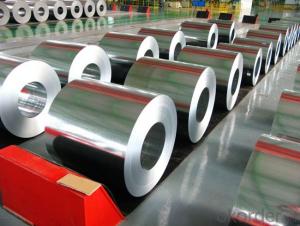Stainless Steel Crown Ada Code
Stainless Steel Crown Ada Code Related Searches
Best Paint For Stainless Steel Blanket Insulation For Steel Buildings Primer For Galvanized Steel Foam Filter For Stainless Steel H S Code For Stainless Steel Surface Grinding Wheels For Stainless Steel Surface Grinding Wheels For Hardened Steel Hole Saw For Stainless Steel Paint For Stainless Steel Stainless Steel For BbqHot Searches
Steel Mesh Panels For Sale Price For Stainless Steel Scrap Scrap Price For Stainless Steel Price For Stainless Steel Stainless Steel Tank For Sale Stainless Steel Sheets For Sale Cheap High Tea Sets For Sale Stainless Steel Tanks For Sale Stainless Steel For Sale High Density Fiberboard For Sale Solar Hot Water Collectors For Sale Scaffolding For Sale In Uae Scaffolding For Sale In Ireland Scaffolding For Sale In Houston Type Of Inverter For Solar Price Of Shipping Containers For Sale Types Of Inverter For Solar Stock Price For Aluminum Used Solar Inverter For Sale Steel Mesh Panels For SaleStainless Steel Crown Ada Code Supplier & Manufacturer from China
Okorder.com is a professional Stainless Steel Crown Ada Code supplier & manufacturer, offers integrated one-stop services including real-time quoting and online cargo tracking. We are funded by CNBM Group, a Fortune 500 enterprise and the largest Stainless Steel Crown Ada Code firm in China.Hot Products
FAQ
- Tinplate is different from other types of steel primarily because it has a thin layer of tin coating on its surface. This coating provides tinplate with exceptional corrosion resistance, making it ideal for packaging food and beverages. Additionally, the tin coating gives tinplate a shiny appearance and enhances its solderability, making it suitable for various industrial applications.
- Tinplate is coated for corrosion resistance through a process called electrolytic tinning. In this process, a thin layer of tin is deposited onto the surface of the tinplate using an electric current. This tin coating acts as a protective barrier, preventing the underlying steel from coming into direct contact with oxygen and moisture, which are the main causes of corrosion.
- What are the characteristics of different tin process
- Shapes: tinplate cans can be made into various shapes according to different needs, such as cans, cans, cans, circular elliptical horseshoe and trapezoid etc, can satisfy the different needs of product packaging, and the packaging container more change, promote sales. 6. recyclable: in line with international environmental requirements, in line with future product trends.
- Both tinplate and stainless steel have corrosion protection
- Tinplate is common steel tin plating, tin coating is broken, later, because the tin is more corrosion resistant than iron, so iron will sooner corrosion. Mainly used for tins.
- Tinplate and tin-free steel differ primarily in the presence or absence of tin coating on the surface. Tinplate refers to steel sheets or strips coated with a thin layer of tin, providing corrosion resistance and enhancing the appearance. In contrast, tin-free steel is steel that lacks this tin coating but may have other protective coatings, such as chrome or organic materials, to prevent rust and improve durability.
- Yes, tinplate can be used for signage and advertising purposes. It is a versatile material that can be easily customized, printed on, and shaped into various forms and sizes. Tinplate offers durability, weather resistance, and a professional appearance, making it suitable for outdoor and indoor signage, as well as promotional displays and advertising campaigns.
- There are several different ways to recycle tinplate closures. One way is to take them to a recycling center where they can be melted down and reused to make new tinplate products. Another way is to repurpose them by using them for arts and crafts or other creative projects. Additionally, some companies offer take-back programs where you can return your tinplate closures to be recycled by the manufacturer.
- The recycling process for tinplate involves collecting and sorting tin cans and other tinplate materials from households and businesses. These materials are then transported to a recycling facility where they are shredded and melted down to remove any impurities. The molten tin is then cooled and solidified to form new sheets of tinplate, which can be used to manufacture various products. This process helps conserve resources, reduce waste, and minimize the environmental impact of tinplate production.















































